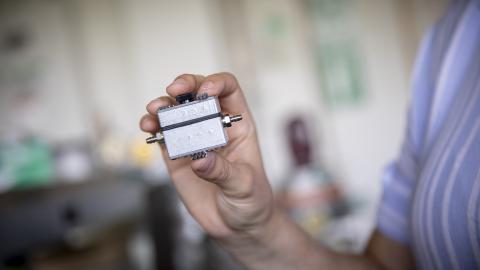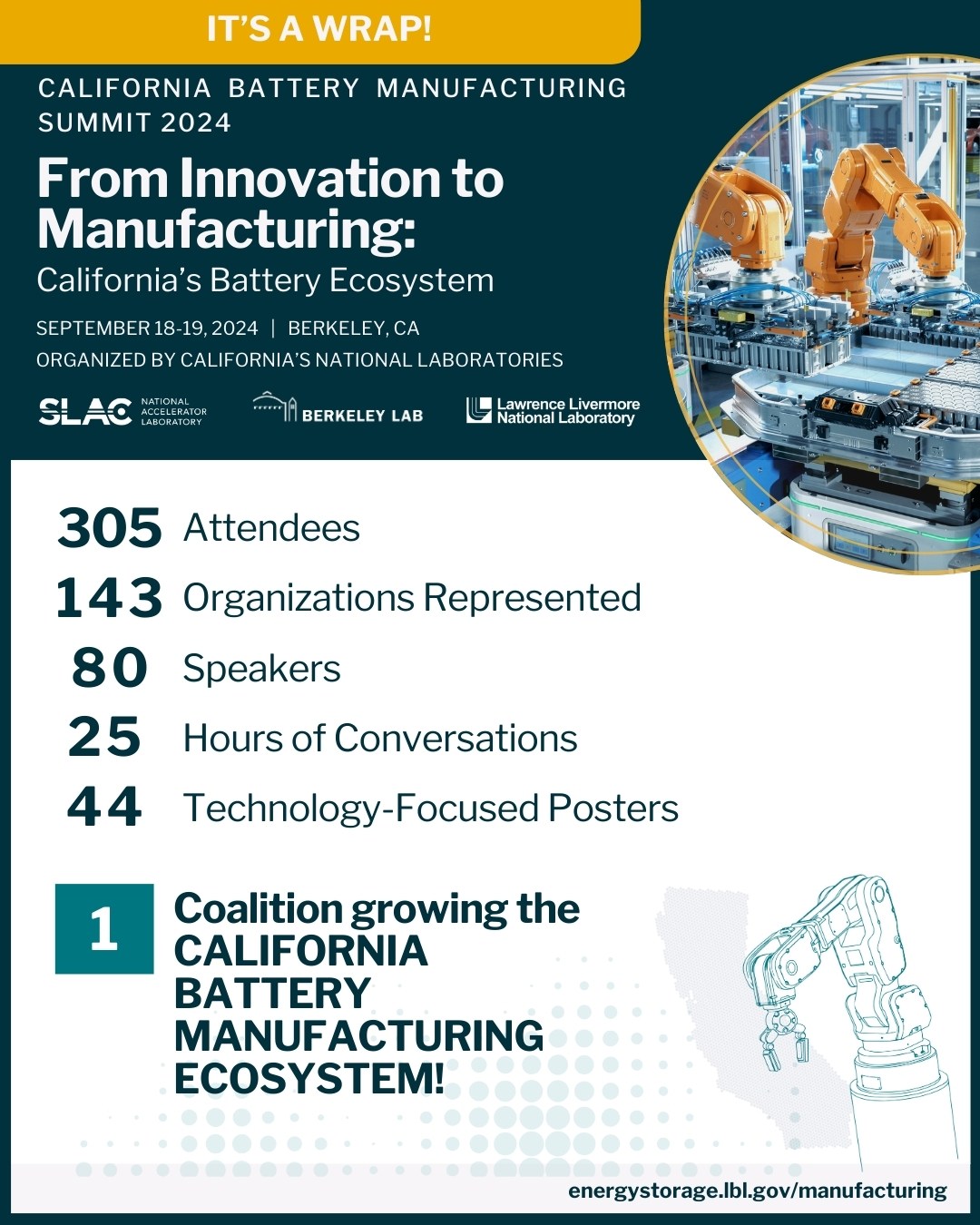Energy Technologies Area
Stay in Touch

Our research is guided by the most pressing challenges of our time. From developing strategies to fight the Climate Crisis to fixing our nation's infrastructure to addressing inequity through energy justice, our research has real-world impact across sectors.

Learn about the Energy Technologies Area's strategic research initiatives and ten-year milestones. Our Strategic Plan covers ETA's priority research areas: energy storage, resilience, integrated energy systems, the water-energy nexus, and science of manufacturing.

Our researchers are organized into three research Divisions, which are dedicated to science and delivering results that are tangible. Our Divisions host expertise and facilities and foster partnership to bring energy solutions to the world.
California Battery Manufacturing Summit 2024
It's a wrap! In September, Berkeley Lab was honored to host the California Battery Manufacturing Summit 2024, co-organized with Lawrence Livermore National Laboratory and SLAC National Accelerator Laboratory. Thought leaders from the U.S. Department of Energy, California Energy Commission, California State Treasurer’s Office, Industry, Local Government, Workforce Organizations, Universities and Laboratories advanced discussions around sustainable battery manufacturing and recycling, innovations in energy storage, and California's leadership in clean energy.
We thank the Scientific Organizing Committee, led by Dr. Gao Liu, Group Leader of the Applied Energy Materials Group, and also included Dr. Vincent Battaglia, Group Leader of the Energy Storage Group, Dr. Jagjit Nanda, Distinguished Scientist at SLAC National Accelerator Laboratory, Dr. Lynn Trahey, Research Technical Manager at SLAC National Accelerator Laboratory, Dr. Johanna Nelson Weker, Lead Scientist, SLAC National Accelerator Laboratory, Dr. Jianchao Ye, Staff Scientist, Lawrence Livermore National Laboratory, and Dr. Marissa Wood, Staff Scientist, Lawrence Livermore National Laboratory. Over 300 participants joined the two-day event to brainstorm a path towards creating material and battery pilot production facilities in California.
Stay tuned while we prepare conference proceedings. If you wish to join the coalition of vested stakeholders or be informed about upcoming battery manufacturing events please email batterymanufacturing@lbl.gov.





